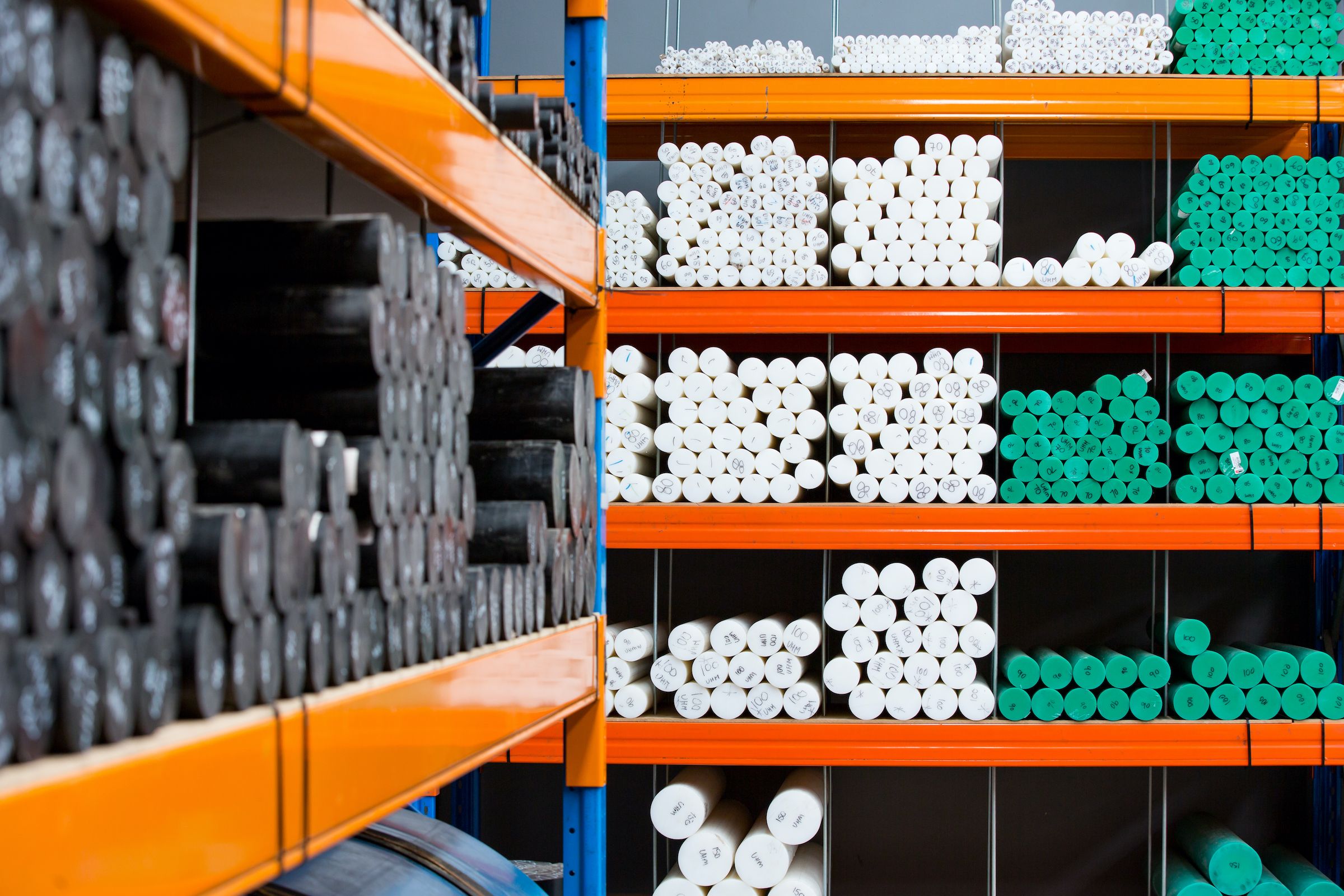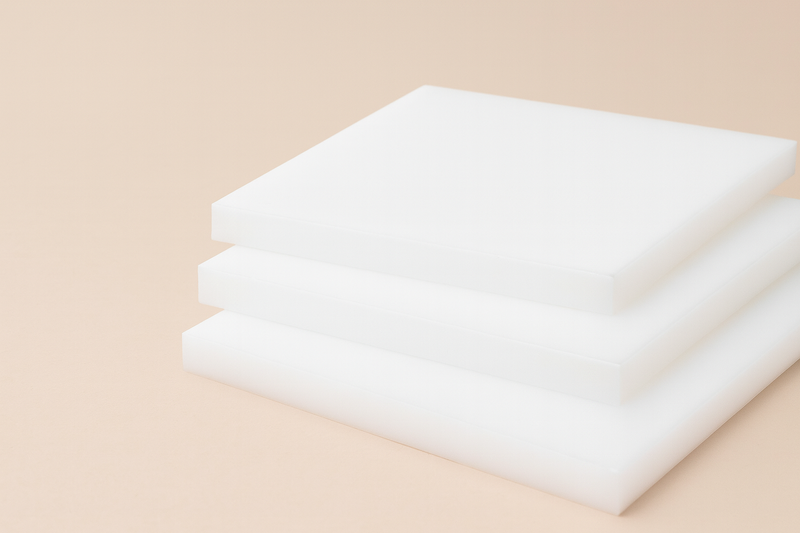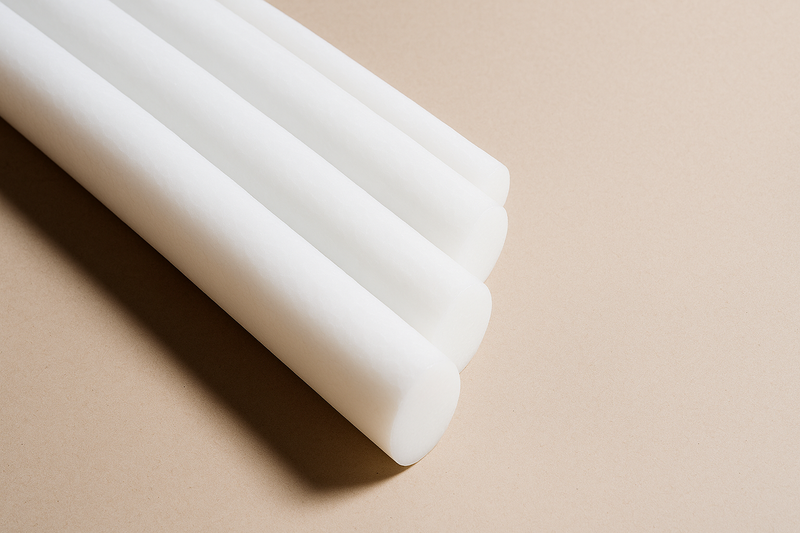At a glance
- Engineering plastics replace traditional materials like metal, rubber, glass, and ceramics in high-performance industrial settings.
- Sectors adopting these materials include mining, food processing, transport, and manufacturing, where strength, chemical resistance, and precision are critical.
- Businesses are switching for benefits like significant weight reduction, zero rust, extended part life, and simplified machining.
- ePOL’s online portal streamlines the transition to engineered plastics, allowing for rapid comparison and direct ordering of high-quality materials.
In industries like food processing, manufacturing, and transport, traditional materials such as metal, rubber, glass, and ceramics often struggle to keep up with demanding conditions. Corrosion, brittleness, excess weight, and complex machining can lead to frequent breakdowns and high maintenance costs.
That’s why many procurement teams are shifting toward engineering plastics. These are built to handle tough environments while offering better durability, lighter weight, and easier fabrication in industrial applications.
Materials such as Cast Nylon, Acetal, PEEK, UHMWPE, HDPE, PTFE, and Polycarbonate are increasingly being used in place of traditional materials across industries.
In this blog, we will cover what materials engineering plastics are replacing and the reasons behind it.
Replacing Metals: Lightweight and Corrosion-Resistant
Metals like steel, aluminum, and brass have long been the first choice for industrial components requiring strength and structural integrity.
However, engineering plastics are now emerging as a high-performance alternative in many applications, particularly where weight, corrosion resistance, or fabrication efficiency are critical.
For example, Cast Nylon sheet is widely used in pulleys, gears, and wear pads, offering low friction, high impact strength, and quieter operation compared to metal equivalents. Similarly, Acetal Plastic products deliver excellent dimensional stability and low moisture absorption, making them ideal for bushings, valve parts, and bearing surfaces.
Likewise, PEEK Plastic provides outstanding thermal resistance and mechanical strength for high-load, high-temperature environments such as aerospace or medical devices.
Compared to metals, engineering plastics offer a wide range of operational advantages, such as:
- Significantly lower weight for easier handling and reduced energy use
- Natural corrosion resistance without surface treatments
- Simplified machining with faster production cycles
- Lower wear on mating components, extending system life
- Quieter operation and reduced vibration in moving parts
For manufacturers, these materials help reduce production costs, minimise downtime, and increase long-term equipment reliability.
Replacing Glass: Durable Transparency
While glass remains the standard for optical clarity, it presents significant limitations in high-impact or safety-critical environments. Its brittleness, weight, and risk of shattering under stress make it less suitable for many industrial and commercial applications.
Polycarbonate plastic offers a high-performance alternative. With transparency comparable to glass and notable impact resistance, it is widely used in machine guards, safety panels, viewing windows, and face shields where both visibility and protection are essential.
Polycarbonate is used in pharmaceutical production, food processing, and construction sectors for enclosures, protective barriers, and skylights that must withstand mechanical impact without compromising clarity. Its lightweight nature reduces structural load and enhances workers’ safety.
Polycarbonate delivers both reliability and operational efficiency, whereas glass would introduce risk or complexity. This makes engineering plastics ideal for industrial uses, where impact-resistant transparency is essential.
Replacing Rubber: Consistent Performance Under Load
Rubber has long been the material of choice for seals, dampers, and wear pads, thanks to its flexibility and ability to absorb shock. However, rubber often fails in industrial applications under continuous load, exposure to harsh chemicals, or extended mechanical stress. It can deform permanently, degrade over time, and lose effectiveness in demanding environments, leading to frequent replacements and unplanned downtime.
Engineering plastics offer a more reliable and consistent alternative for these conditions. Typical replacements include:
- UHMWPE: For high-impact sliding surfaces, liners, and conveyor wear strips
- Acetal: For rollers, seals, and components needing dimensional stability under repeated motion
- HDPE: For outdoor or chemical-exposed applications in agriculture and transport
Unlike rubber, these engineered plastics maintain structural integrity under pressure, resist chemical breakdown, and remain unaffected by temperature variation. Their dimensional consistency also enables precision-fit applications, reducing failure risk in high-tolerance assemblies.
Replacing Ceramics: Toughness Without Brittleness
Ceramics are widely used for high-temperature and electrically insulating applications, but their inherent brittleness and machining difficulty make them a poor fit for complex industrial systems. Ceramic components can fracture under mechanical stress, require expensive tooling, and often can't be easily modified or replaced on-site.
Engineering plastics like PEEK and PTFE offer a high-performance alternative with comparable thermal and dielectric properties but with greater toughness and machinability. PEEK supports continuous high operating temperatures and is used in aerospace hardware, thermal isolators, and high-stress bushings where both strength and thermal stability are essential. Likewise, PTFE plastic is chemically inert and naturally non-stick, making it ideal for use in corrosive environments, including labware, chemical-resistant linings, and high-voltage insulation.
These engineering plastics are preferred in electronics manufacturing and pharmaceuticals, where dimensional precision and safety are critical. Unlike ceramics, they can be machined using standard tooling, reducing lead time and fabrication costs. They also absorb impact without shattering, enabling safer performance in environments where shock, vibration, or thermal cycling occur.
Read More: How choosing high-quality engineering plastic sheets and rods can save your business money.
Replacing traditional materials like metal, rubber, glass, and ceramics is ultimately about improving reliability, reducing maintenance, and increasing system longevity. Engineering plastics help meet these goals across demanding industries.
However, with so many options available, the real challenge is selecting the right plastic and a reliable supplier. That’s where ePOL comes in. Whether you're designing for food-grade hygiene, chemical resistance, or high-load mechanical stress, our online platform makes it easy to compare material properties and order exactly what you need with clarity and confidence.
With just a few clicks on ePOL’s online portal, you can explore technical data, check live stock levels, and order high-performance plastics trusted by industry leaders, without unnecessary delays or complexity.
Contact ePOL to start your next project with materials that improve performance from day one.








